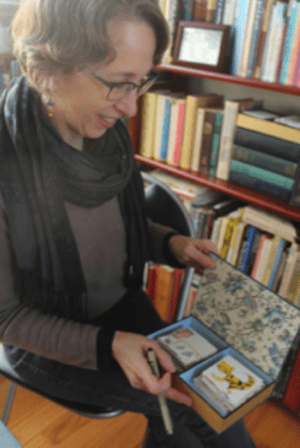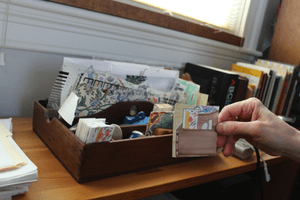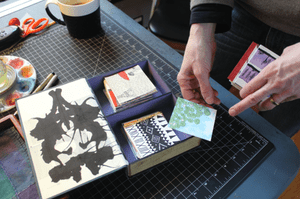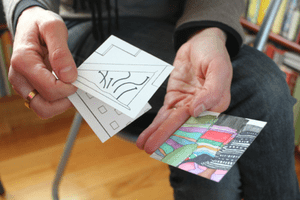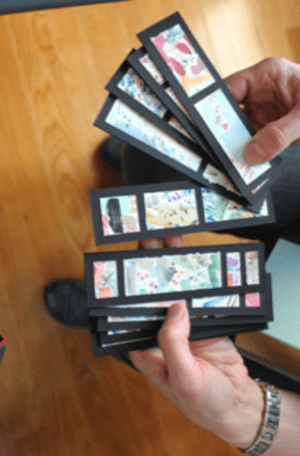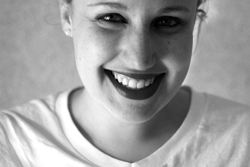Three by Three: Making Art a Priority
Some days she doesn’t remember to pause and for something to paint. “Those days are kind of sad,” she says. She holds up a still life next to its original scene in her study, a painting she made on one of those days.
Even when there seems to be nothing worth painting, Elizabeth finds inspiration. This sense of discipline drives her project. Since her first birthday after the death of her father, three years ago, Elizabeth hasn’t missed one day of visually documenting her life. “My father was very disciplined,” she tells me. She wanted to take this life philosophy and put it into practice, creating something significant each day with a “visual journal project.” She imagined herself growing older and losing her memory. She wanted to remember something important from each day and share these memories with her family, especially her children.
She’s deliberate, not only with her practice, which usually takes place “after tea time,” but with her approach and technique. She flips one card around to the back, where she’s only written the date. She doesn’t write the location because the painting itself serves as the memory. She uses watercolor paper, a thin India ink pen, and a thick black sharpie. She fills in the lines with watercolor. The materials are high quality and portable. She can make her art anywhere.
Though the project is purposeful, it’s had some unexpected outcomes. Elizabeth tests her paints before committing to a shade, swirling abstract designs onto cards meant to be thrown away. She’s kept them, though, gluing the little designs on black museum board and storing them in quilted boxes. Shuffling the cards, she stops to examine one, pointing out the grey and blue wisps her brush has formed by accident. She squints, inspecting the marks as if they were cells under a microscope. She tells me the whole process has made her slow down and learn to really look, to take in as many details as possible. “Like, who stops to look at this stuff?” she says. “It’s kind of trippy!” It is, the way the colors blur and smudge on canvas creating little landscapes on their own.
Throughout our afternoon tea, the conversation circles back to an important theme. By starting this project, Elizabeth has given herself a gift; the time to consider what to paint, to compose each little scene, and to stop and look. As a teacher, Elizabeth spends plenty of time teaching her little ones to prioritize their art. Now it’s time prioritize her own. “This is a process I wanted to make time for,” she says. The art she makes isn’t for mass consumption. It’s not for a profit or to advertise a message. The time she takes each day to consider scenes worth painting, test her colors, draw lines with ink, and fill them with pigment is her own. The art she creates belongs to her.


